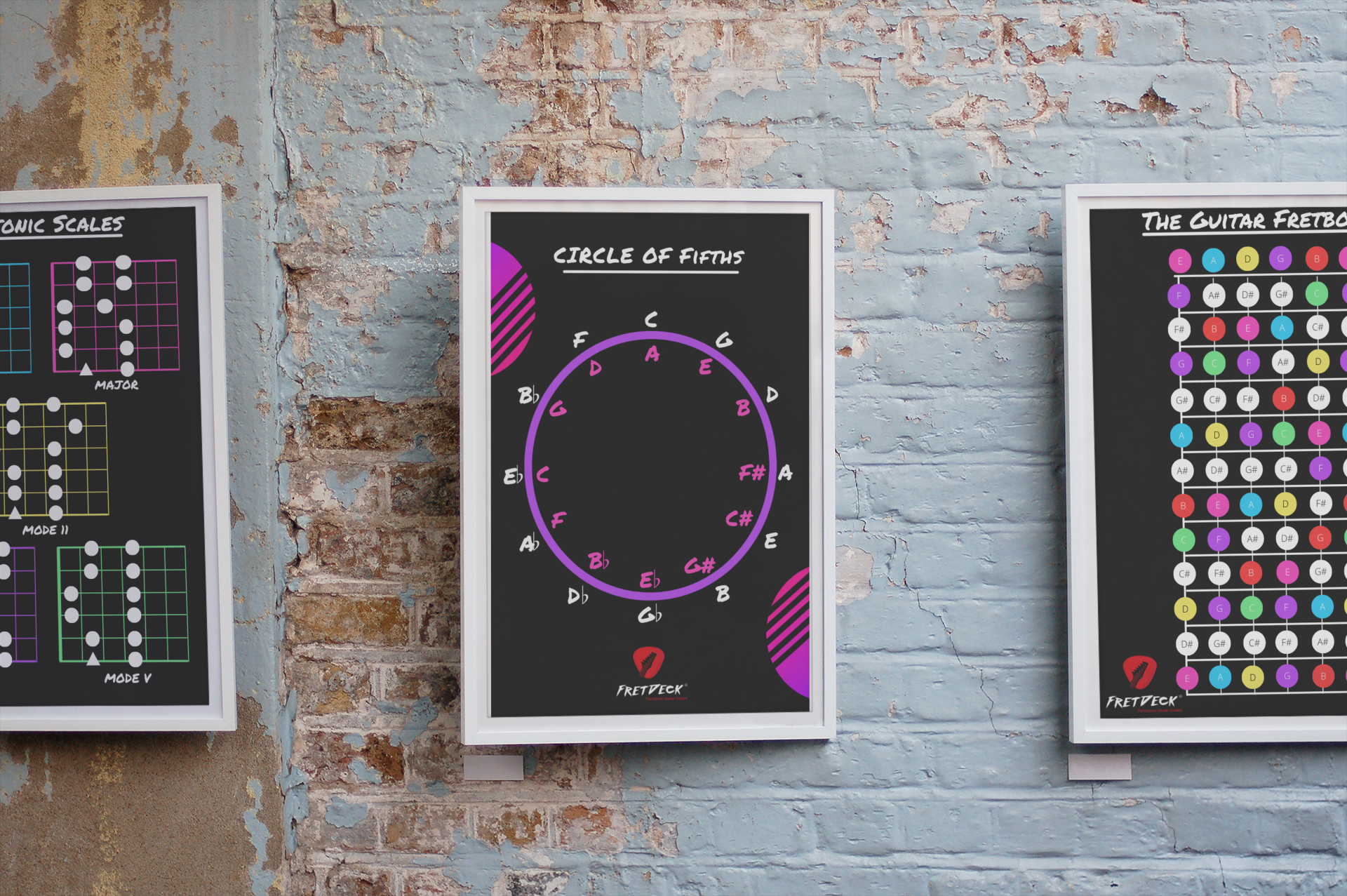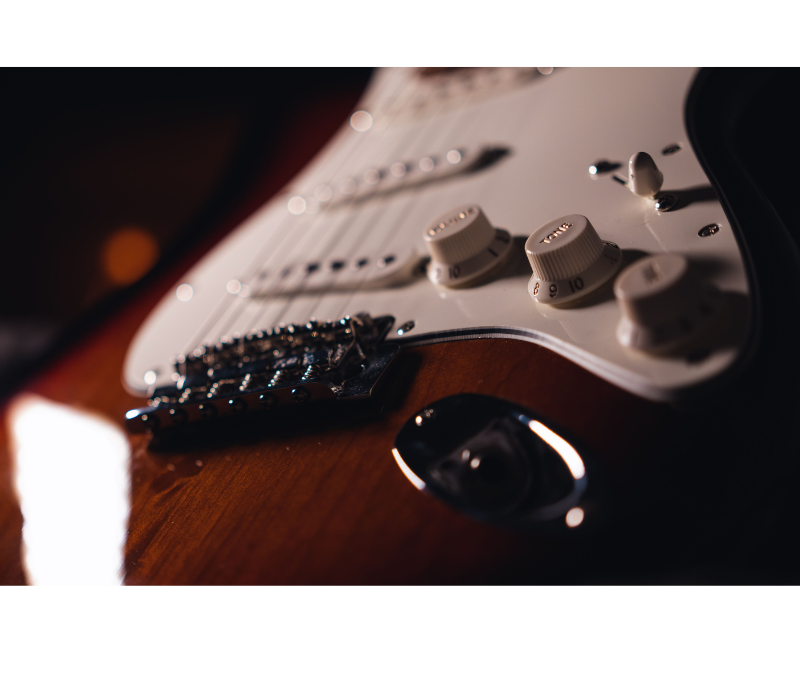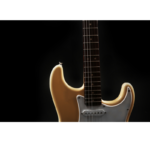Understanding popular guitar chord progressions is one of the best ways to level up your playing. Chord progressions provide the harmonic framework for countless songs, and learning them helps you play along with familiar tunes, write your own music, and improvise confidently. This guide explores some of the most widely used chord progressions, why they work so well, and how to master them.
Why Learn Popular Guitar Chord Progressions?
Chord progressions bring a song’s structure to life and set its emotional tone. Certain patterns resonate universally across genres, which is why you’ll hear similar chord progressions in pop, rock, blues, jazz, and even folk music. By learning these popular sequences, you’ll be able to recognize and play along with countless songs while gaining insight into the art of songwriting.

Download FREE Guitar Charts!
We have 27 FREE guitar charts to help you learn the guitar fretboard. Learn How to play chords and scales with these free resources.
Free Guitar Resources
The Basics of Chord Progressions
Chord progressions are represented by Roman numerals based on their place in the scale. Each numeral represents a chord type:
- I, ii, iii, IV, V, vi, vii°
This numbering system makes it easy to transpose progressions into any key. For example, in the key of C major:
- I (C), ii (Dm), iii (Em), IV (F), V (G), vi (Am), vii° (Bdim)
With this setup, you can easily understand and play popular chord progressions in any key.
Top 5 Popular Guitar Chord Progressions
Let’s dive into some of the most iconic and widely used chord progressions that every guitarist should know. From pop to rock and jazz to blues, these patterns are the backbone of many beloved songs.
1. The I-IV-V Progression (Rock and Blues Standard)
- Key Example in C: C – F – G
- Sound: Strong, simple, foundational
The I-IV-V progression is a classic in rock and blues, making it a go-to for beginners. Its simplicity gives guitarists room to experiment with embellishments, such as licks and fills, while maintaining the recognizable sound of the progression.
Practice Tip: Experiment with a 12-bar blues format to bring out that classic blues feel in this progression.
2. The I-V-vi-IV Progression (Pop and Rock Favorite)
- Key Example in C: C – G – Am – F
- Sound: Catchy, emotional, memorable
This is one of the most popular guitar chord progressions, used in countless hits across pop and rock music. Songs like “Let It Be” by The Beatles and “With or Without You” by U2 rely on this pattern for its smooth, singable quality.
Challenge: Try rearranging these chords in different sequences to discover fresh-sounding variations.
3. The ii-V-I Progression (Jazz Essential)
- Key Example in C: Dm – G – C
- Sound: Sophisticated, smooth, resolved
The ii-V-I progression is a jazz staple, creating a beautifully smooth resolution back to the I chord. Jazz players often add extended chords (like 7ths, 9ths, or 11ths) to give each chord a richer sound. Practicing this progression with jazz voicings is a great way to develop your ear and experiment with jazz harmony.
Pro Tip: Practice ii-V-I in multiple keys to become more versatile in jazz improvisation.
4. The vi-IV-I-V Progression (Ballad Power)
- Key Example in C: Am – F – C – G
- Sound: Powerful, emotional, cinematic
This progression is perfect for power ballads and emotional pop songs. Its initial minor vi chord brings a bittersweet feel, ideal for expressive playing. It’s often used in slower, heartfelt songs and is a great starting point for beginner guitarists to work on fingerpicking techniques.
Experiment: Try playing this progression with fingerstyle or softer strumming to enhance its dramatic effect.
5. The I-vi-ii-V Progression (Classic ‘50s Style)
- Key Example in C: C – Am – Dm – G
- Sound: Nostalgic, classic, smooth
Known as the “doo-wop” progression, this chord sequence evokes the classic sound of ‘50s pop and R&B. Songs like “Stand By Me” by Ben E. King are built on this structure. This progression is simple but satisfying, and great for adding a retro feel to your playing.
Try This: Add a bit of swing or shuffle rhythm for an extra layer of nostalgic charm.
How to Create Your Own Popular Guitar Chord Progressions
Now that you’re familiar with popular progressions, you can start crafting your own by making small adjustments and experimenting with different starting points. Here are a few tips to get creative:
1. Use Suspended or Seventh Chords
Substitute major or minor chords with suspended chords (like Csus4 or Dsus2) or sevenths (like G7 or Cmaj7) to add an extra layer of harmony. These chords bring depth and color, making a progression sound more sophisticated.
2. Switch Up the Order
Reordering the chords can add an entirely new feel to a progression. If you usually play I-IV-V, try playing it as V-IV-I instead and see how it changes the mood.
3. Add Modulation
Shifting the progression up or down by a half or whole step within a song can add tension and excitement, especially when building up to a chorus or breakdown.
Enhance Your Progressions with ChordCraft’s eBook and Progression Tools
The ChordCraft eBook is an excellent resource for mastering these progressions and discovering new ways to use them. Here’s how it can help:
- In-Depth Practice Techniques: The eBook covers each progression in detail, with exercises that guide you from basic versions to advanced variations.
- Progression Cheat Sheets: These quick-reference guides help you learn popular progressions faster, so you can play and memorize patterns more effectively.
- Songwriting and Improvisation Tips: Gain insights into using chord substitutions, adding seventh chords, and developing unique progression sequences, making it easy to create your own music.
- Interactive Progression Tools: Experiment with different chord progressions and keys using ChordCraft’s interactive tools, which are great for building confidence and creativity on the guitar.
Practice Tips for Learning Popular Guitar Chord Progressions
- Play Along with Your Favorite Songs: Choose a song that uses one of these progressions, and play along to get a feel for timing and rhythm.
- Use a Metronome: Practicing with a metronome can help you maintain steady timing and improve rhythm.
- Experiment with Rhythmic Variations: Try playing each progression with different strumming patterns to see how it affects the feel.
Connect with Other Guitarists on the Guitar Freaks Hangout on Discord!
Looking for a community to share your progress, ask questions, or swap tips? Join the Guitar Freaks Hangout on Discord, where guitarists at all levels connect and learn together. It’s a great space to get feedback on your playing, learn about gear, and make friends who share your love of guitar!

Download FREE Guitar Charts!
We have 27 FREE guitar charts to help you learn the guitar fretboard. Learn How to play chords and scales with these free resources.
Free Guitar Resources










